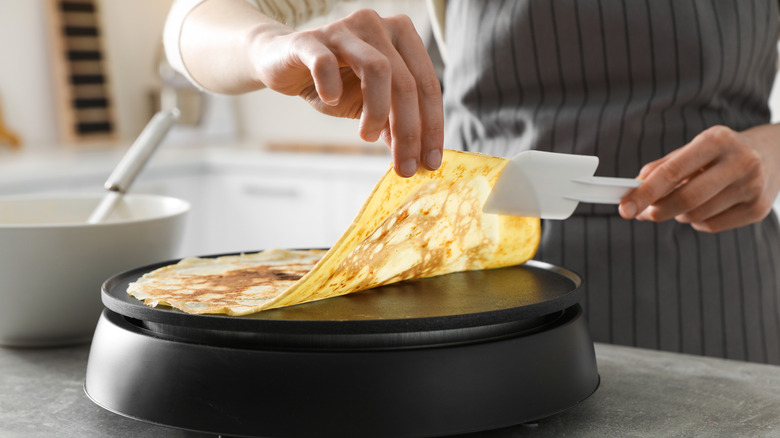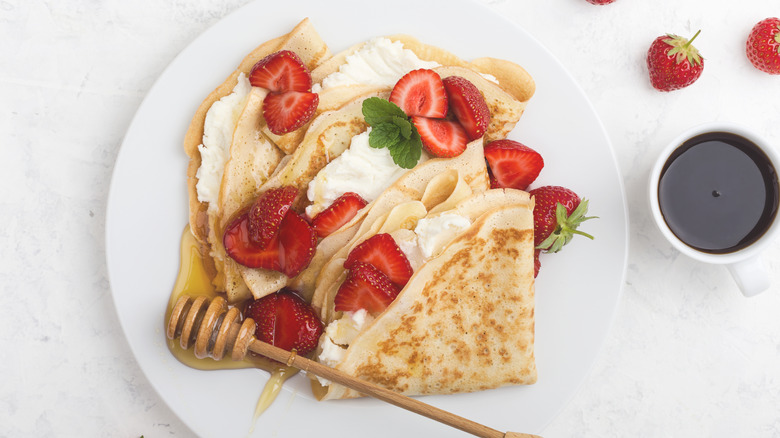The Telltale Signs Your Crepe Is Ready To Flip
Making the perfect crepe is a tricky dance of timing and technique. Knowing exactly when to flip is crucial for achieving that ideal texture, which is tender on the inside with a lightly browned, crisp outside. While cooking times can vary based on your pan's temperature and the thickness of your batter, there are a few telltale signs to watch for.
As your crepe cooks, you'll notice the edges begin to take on a light golden-brown color. This subtle browning is an indicator that the bottom is setting and developing those delicious, slightly caramelized flavors. At the same time, the top of your crepe will begin losing its wet, batter-like shine and taking on a drier, more matte-like appearance. You also will likely see the edges of the crepe lifting slightly from the pan, which is a subtle sign that it's ready for its flip. These visual cues usually appear after it's been cooking for one to two minutes on the first side, but be sure to keep a close eye on your crepe and adjust as needed, as every stove, temperature setting, and pan are different.
Mastering the flipping technique for your crepes
Once your crepe shows signs of being ready, it's time for the flip. For more experienced chefs, or those with a little daring side, the classic one-handed pan toss is a technique that, while seemingly daunting, can be mastered with practice. First, make sure the crepe is loose by gently shaking the pan to ensure there's movement. Then, with a confident upward flick of your wrist, send the crepe into the air, aiming for a clean, and graceful, landing back into the pan.
If this gymnastics-like flip feels a little too advanced, you can use a thin, flexible spatula instead. Gently slide the spatula under the edge of the crepe, loosening the crepe from the pan before lifting and flipping. As you perfect the spatula maneuver (which is different from the one used on scrambled eggs), you can also carefully use your fingers to help flip the crepe, allowing for a guided and precise turnover. The second side will only need 30 seconds or so to cook.
Once your crepes are cooked, they're ready to be filled. There are many crepe recipes, from classic sweet crepes drizzled with lemon, whipped cream cheese, and sugar, to savory galettes stuffed with ham, cheese, and eggs. You can even make fresh crepes from stale bread. For a taste of Vietnam, try crispy bánh xèo filled with shrimp, pork, and bean sprouts. Or add a French flair to your crepes by incorporating salmon and spinach. If you're craving a decadent dessert, try a multi-layered crepe cake filled with blackberry and mascarpone cream.


